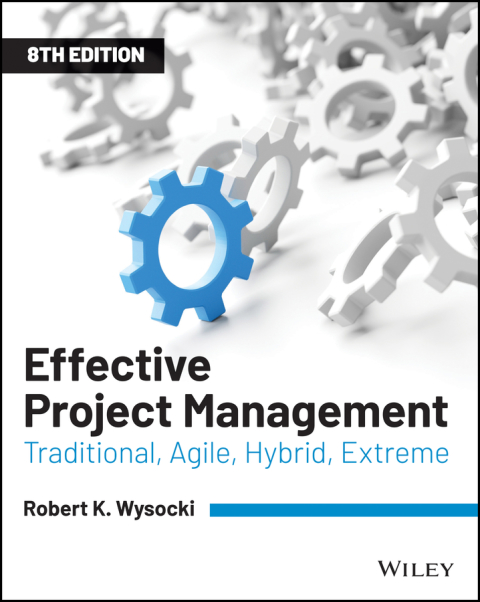Description
Efnisyfirlit
- Cover
- Preface
- Introduction
- Why I Wrote This Book
- How Is This Book Organized?
- Unique Value Propositions
- The Rationale for This Organization
- How to Use This Book
- Who Should Use This Book
- What’s on the Website
- Putting It All Together
- EPM8e Logo
- Part I: Understanding the Project Management Landscape
- CHAPTER 1: What Is a Project?
- Defining a Project
- An Intuitive View of the Project Landscape
- Defining a Program
- Defining a Portfolio
- Understanding the Scope Triangle
- The Importance of Classifying Projects
- The Contemporary Project Environment
- Discussion Questions
- CHAPTER 2: What Is Project Management?
- Understanding the Fundamentals of Project Management
- Challenges to Effective Project Management
- Managing the Creeps
- What Are Requirements, Really?
- Introducing Project Management Life Cycles
- Choosing the Best‐Fit PMLC Model
- Discussion Questions
- CHAPTER 3: What Is Strategic Project Management?
- Definition of Strategic Project Management
- The Business Environment: A View from the Top
- Putting It All Together
- Discussion Questions
- CHAPTER 4: What Is a Collaborative Project Team?
- Overview
- The Complex Project Team
- Using the Co‐Manager Model
- Establishing Meaningful Client Involvement
- The Challenges to Meaningful Client Involvement
- Challenges to Attaining and Sustaining Meaningful Client Involvement
- Discussion Questions
- CHAPTER 5: What Are Project Management Process Groups?
- Overview of the 10 Project Management Knowledge Areas
- Overview of the Five Process Groups
- Mapping Knowledge Areas to Process Groups
- Discussion Questions
- Part II: Traditional Project Management
- CHAPTER 6: How to Scope a TPM Project
- Using Tools, Templates, and Processes to Scope a Project
- Managing Client Expectations
- Discussion Questions
- CHAPTER 7: How to Plan a TPM Project
- Using Tools, Templates, and Processes to Plan a Project
- The Importance of Planning
- Using Application Software Packages to Plan a Project
- Planning and Conducting Joint Project Planning Sessions
- Estimating
- Constructing the Project Network Diagram
- Writing an Effective Project Proposal
- Gaining Approval to Launch the Project
- Discussion Questions
- CHAPTER 8: How to Launch a TPM Project
- Using the Tools, Templates, and Processes to Launch a Project
- Recruiting the Project Team
- Developing a Team Deployment Strategy
- Conducting the Project Kick‐Off Meeting
- Establishing Team Operating Rules
- Managing Scope Changes
- Managing Team Communications
- Assigning Resources
- Resource Leveling Strategies
- Finalizing the Project Schedule
- Writing Work Packages
- Discussion Questions
- CHAPTER 9: How to Execute a TPM Project
- Using Tools, Templates, and Processes to Monitor and Control
- Establishing Your Progress Reporting System
- Applying Graphical Reporting Tools
- Managing the Scope Bank
- Building and Maintaining the Issues Log
- Managing Project Status Meetings
- Defining a Problem Escalation Strategy
- Gaining Approval to Close the Project
- Discussion Questions
- CHAPTER 10: How to Close a TPM Project
- Using Tools, Templates, and Processes to Close a TPM Project
- Writing and Maintaining Client Acceptance Procedures
- Discussion Questions
- Part III: Complex Project Management
- CHAPTER 11: Complexity and Uncertainty in the Project Landscape
- What Is Complex Project Management?
- What Is Lean Agile Project Management?
- Understanding the Complexity/Uncertainty Domain of Projects
- Discussion Questions
- CHAPTER 12: Agile Complex Project Management Models
- Iterative Project Management Life Cycle
- Adapting and Integrating the APM Toolkit
- Discussion Questions
- CHAPTER 13: Extreme Complex Project Management Models
- The Complex Project Landscape
- What Is Extreme Project Management?
- Using the Tools, Templates, and Processes for Maximum Extreme PMLC Model Effectiveness
- Using the Tools, Templates, and Processes for Maximum xPM and MPx Effectiveness
- Discussion Questions
- CHAPTER 14: Hybrid Project Management Framework
- What Is a Hybrid Project?
- What Is a Hybrid Project Manager?
- Background of the Effective Complex Project Management (ECPM) Framework
- Discussion Questions
- CHAPTER 15: Comparing TPM and CPM Models
- Linear PMLC Model
- Incremental PMLC Model
- Iterative PMLC Model
- Adaptive PMLC Model
- Extreme PMLC Model
- Challenges to Project Set‐up and Execution
- Discussion Questions
- APPENDIX A: Terms and Acronyms
- APPENDIX B: Case Study: Workforce and Business Development Center
- Hypothesis
- Synopsis
- The Need
- The Problem
- The Solution
- Linkages in the WBDC Model
- The Business Case for a WBDC
- Next Steps
- Putting It All Together
- APPENDIX C: Case Study: Pizza Delivered Quickly (PDQ)
- APPENDIX D: Cited References
- APPENDIX E: What’s on the eiipbs.com Website?
- Course Master File
- A Note on the Answer File for the Discussion Questions
- Additional Chapters
- Index
- End User License Agreement






Reviews
There are no reviews yet.